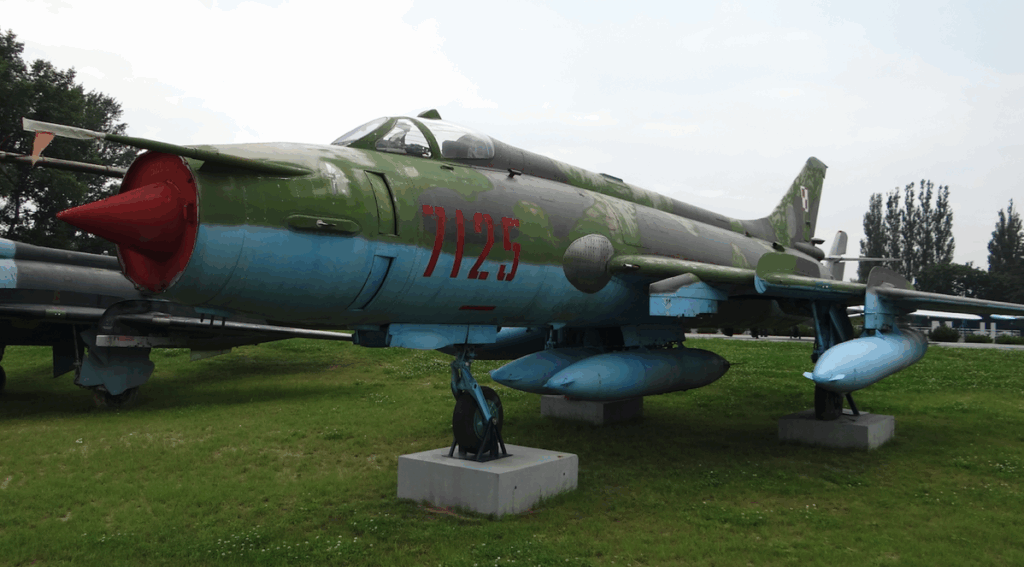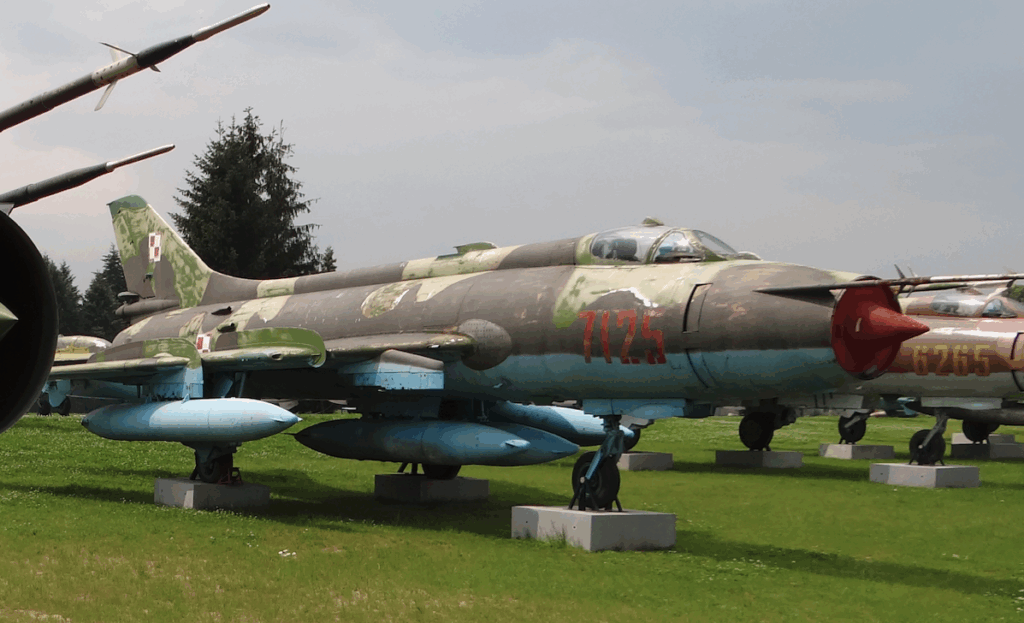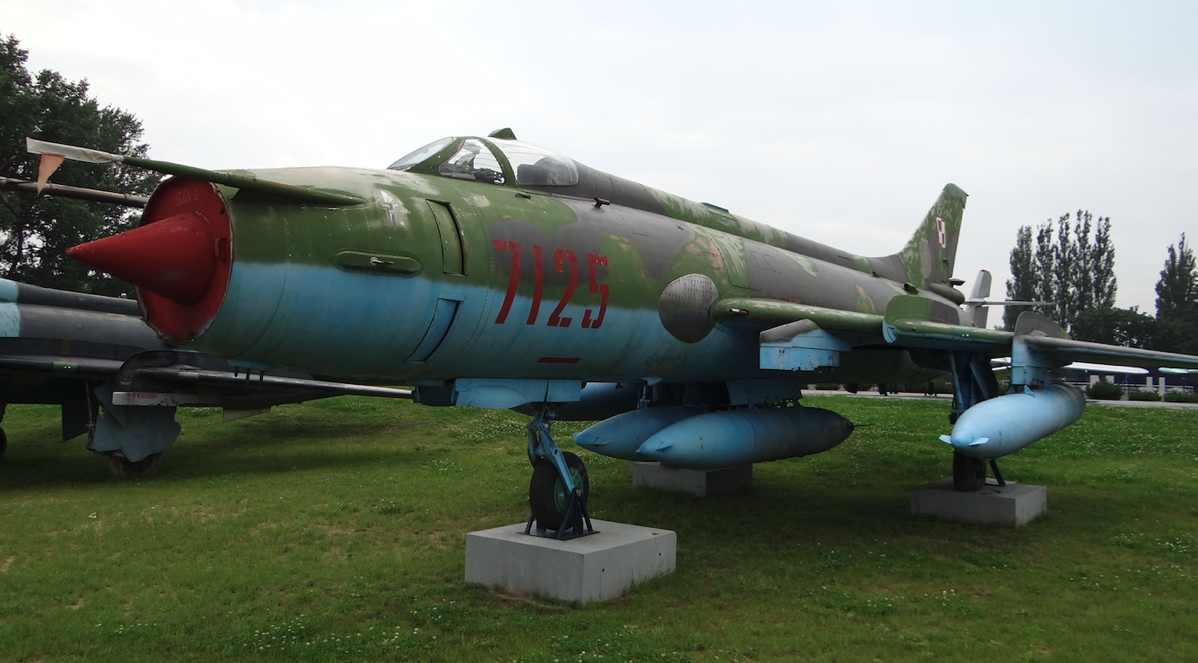Dęblin 2025-05-06
Sukhoi Su-20 nb 7125 strike aircraft.


Sukhoi Su-20 nb 7125 aircraft no. 74105 – Built in 1974. Delivered on February 12, 1977, as the 27th unit. Given by the manufacturer in exchange for a lost aircraft. Served at Powidz Airport. Withdrawn from service on August 19, 1995. In 2012, the aircraft was transferred to the Museum in Dęblin. The aircraft is camouflaged in green and brown.
The first 6 Su-20s were delivered to Poland in 1974. On April 26, 1974, the planes landed at the Powidz airport. These planes received side numbers from 01 to 06, painted red. Of course, these planes were shown to the public during the parade in Warsaw on July 22, 1974. The Polish Army received the remaining planes only in 1976. A total of 25 were purchased. We did not buy the training and combat version, because the Su-7U planes were still used in this role.
Unfortunately, before the main delivery was completed, on February 3, 1976, the first Su-20 plane was lost. The plane had the number 01. If the plane had survived until the side numbers were changed, it would have received the number 4241. The loss was painful, because the pilot, Major (Capt.) pilot Jerzy Doliniec, died. The crash occurred near Kazimierz Biskupi. The cause was a technical failure of the equipment. The engine failed and stopped working. In addition, the entire power supply failed and there were problems with the generators. The failure was the fault of the manufacturer, who admitted his guilt. Therefore, in place of the lost aircraft, the manufacturer delivered a new aircraft (1977). We received the aircraft on February 12, 1977. The aircraft received the nb 7125. We received the remaining 19 Su-20 aircraft in the summer of 1976. These aircraft received four-digit side numbers derived from the serial numbers, painted in red. At that time, the side numbers of the first 6 aircraft also changed.
In Poland, Su-20 aircraft became dual-purpose machines. On the one hand, they could effectively attack enemy objects in depth, and on the other hand, they could conduct active photo and radio-electronic reconnaissance during the day and at night. This second task was performed using a KKR-1 type underslung pod. The pods reached Poland later. It should not be forgotten that the Su-20 used in Poland was also a potential carrier of Soviet tactical nuclear weapons.
The Su-20 aircraft took part in their first joint exercises in 1976, during maneuvers codenamed “Shield-76”. Throughout their service in Poland, Su-20 aircraft were also operated from DOL (airport road sections).
In the 1980s, Polish pilots saved Su-20 aircraft from crashing three times, risking their own lives. On May 18, 1984, Captain Andrzej Pawul collided with a stork during the flight. The pilot suffered a facial injury from glass fragments and limited visibility. However, the pilot managed to land safely. On September 4, 1985, Captain Krzysztof Ryniecki. After firing a heavy S-24 missile, the engine pumped up and the engine stalled. Despite the low altitude, the pilot managed to restart the engine and land safely at the airport. In 1988, the Su-20 aircraft with pilot Major Krzysztof Krzysztoforski was hit by lightning. The engine stalled. The pilot restarted the engine and landed safely at the airport.
In the mid-1990s, the number of aircraft began to decrease rapidly. The aircraft crumbled due to the end of their service life. The end of operation came in February 1997, when the last aircraft were transferred to Bydgoszcz, to the slope, and then scrapped or to museum exhibits. The last aircraft were removed from the inventory in 1998.
Written by Karol Placha Hetman

